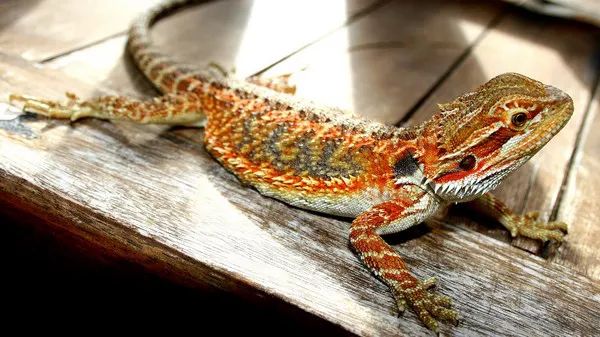When it comes to providing optimal care for your beloved bearded dragon, choosing the best bedding is a crucial aspect of creating a comfortable and healthy environment. The right bedding not only mimics their natural habitat but also plays a pivotal role in maintaining hygiene and promoting overall well-being. In this article, we will explore the various options available and delve into the factors that make a bedding truly the best for bearded dragons.
Understanding the Natural Habitat:
To determine the best bedding for bearded dragons, it is essential to understand their natural habitat. Bearded dragons originate from the arid regions of Australia, where they thrive in a combination of loose substrate and solid surfaces. This insight serves as a foundation for selecting bedding that replicates the conditions of their native environment.
Loose Substrate – A Top Contender:
One of the leading contenders for the best bedding for bearded dragons is loose substrate. Materials such as play sand, reptile-safe soil, or a sand-soil mix closely mimic the sandy terrain of their natural habitat. Loose substrate allows for natural burrowing behaviors, crucial for the mental stimulation and physical well-being of bearded dragons.
The Controversy Surrounding Loose Substrate:
While loose substrate is widely favored, there is a debate within the reptile community about potential ingestion risks. Bearded dragons are known to explore their surroundings with their tongues, and accidental ingestion of loose substrate particles can occur. Proper monitoring and maintaining a clean environment are essential to mitigate these concerns.
Reptile Carpets – A Solid Alternative:
For those who prefer a substrate with less risk of ingestion, reptile carpets emerge as a solid alternative. These carpets provide a flat, stable surface for bearded dragons to walk on while also facilitating easy cleanup. The best reptile carpets for bearded dragons are those made from non-abrasive materials to ensure the health of their sensitive skin.
Tile Flooring – A Practical Choice:
When searching for the best bedding for bearded dragons, tile flooring deserves consideration. Tiles offer a solid and easy-to-clean surface that mimics the rocky outcrops of their natural habitat. Not only do tiles provide stability for bearded dragons, but they also radiate heat efficiently, contributing to the overall thermal gradient within the enclosure.
Paper-Based Substrates – A Hygienic Option:
Paper-based substrates, such as shredded newspaper or paper towels, are often considered the best bedding for bearded dragons in terms of hygiene. These substrates are easy to clean and replace, making them a convenient choice for reptile owners. However, they lack the natural aesthetic appeal and burrowing opportunities that loose substrates offer.
Coconut Coir – Balancing Act:
Derived from coconut husks, coconut coir presents a balanced option for bearded dragon bedding. It retains moisture well, creating a more humid microclimate when needed, while also providing a substrate that allows digging and burrowing. The best coconut coir options for bearded dragons are those specifically designed for reptile enclosures.
Calcium-Sand Mix – Catering to Dietary Needs:
Considering the calcium requirements of bearded dragons, a calcium-sand mix stands out as a bedding option that serves a dual purpose. This type of substrate not only supports natural behaviors like digging but also supplements the reptile’s calcium intake when ingested. It is essential to choose a calcium-sand mix formulated for reptile use to ensure safety.
Maintaining Optimal Humidity Levels:
Apart from choosing the best bedding for bearded dragons, maintaining optimal humidity levels within the enclosure is crucial. Bearded dragons thrive in a relatively dry environment, and excessive humidity can lead to respiratory issues. Regular monitoring and adjustment of the enclosure’s humidity levels contribute to the overall well-being of your pet.
Conclusion:
In conclusion, determining the best bedding for bearded dragons involves careful consideration of factors such as natural habitat, substrate type, and potential risks. Whether opting for loose substrate, reptile carpets, tile flooring, paper-based substrates, coconut coir, or a calcium-sand mix, the key is to create an environment that promotes the physical and mental health of your bearded dragon. Regular observation, proper cleaning practices, and attention to detail will ensure that your reptilian companion thrives in its carefully crafted habitat.
Related Topics:
Where to Cut Bearded Dragon Nails: A Guide to Pet Grooming
Can You Feed Your Bearded Dragon Live Insects: A Guide to Pet Feeding
Can Bearded Dragons Eat Grapes: Unveiling the Truth


























